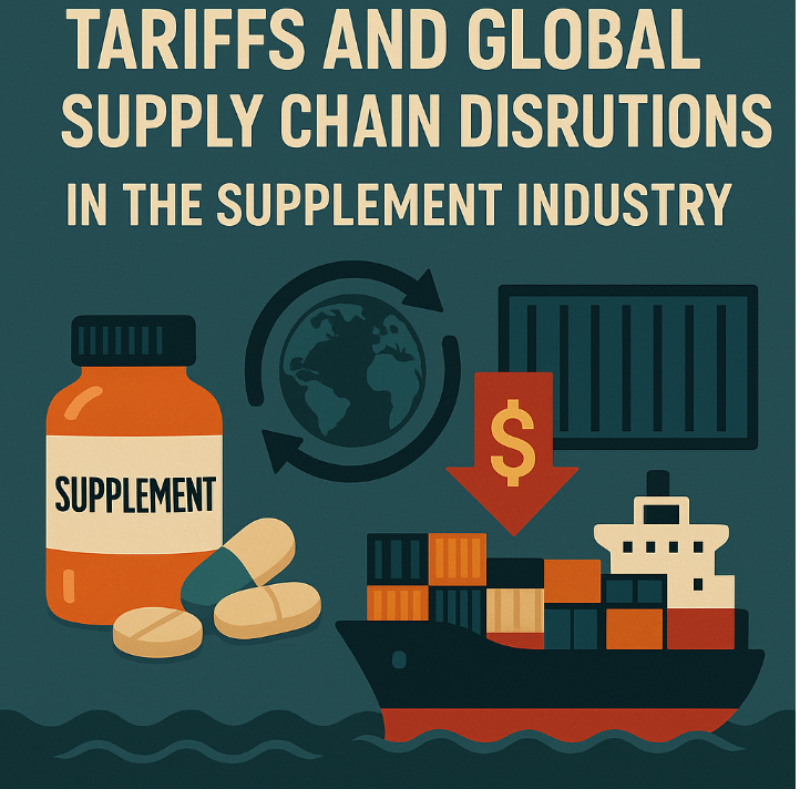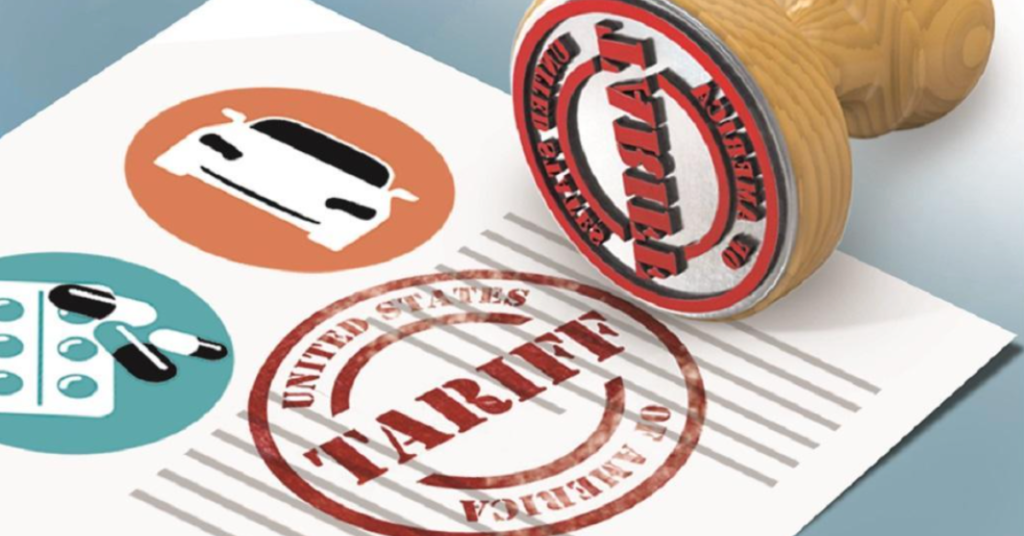Launch Your Supplement Brand | Free Consultation
Home » Industry News and Insights » How to Navigate Tariffs in the Supplement Industry
Share this post
As the supplement industry continues to grow, so do the challenges of keeping products affordable, high-quality, and consistently available. In 2025, these challenges are being intensified by a resurgence of tariffs under the Trump administration, along with ongoing supply chain instability in key regions like China, India, and Southeast Asia.
For brands, manufacturers, and suppliers, adapting to these changes isn’t optional—it’s essential for maintaining profit margins and customer trust.
The Trump administration has reinstated and expanded tariffs on a wide range of Chinese imports, including many materials central to supplement manufacturing, such as:
These tariffs can range from 10–25%, significantly increasing costs for brands that depend on global sourcing.

Audit your supply chain to identify which components are subject to tariff increases. Your manufacturer or procurement partner should provide updated cost breakdowns reflecting these changes.
Heavy dependence on China has become a vulnerability. Brands that relied on single-source ingredients are now looking to diversify their sourcing and reduce risk. Alternatives include:
This shift not only helps offset tariffs but also improves resiliency in the face of future political, environmental, or logistical disruptions.
Develop a backup supplier list for your top 5 ingredients and packaging components. Consider dual sourcing whenever possible to reduce exposure.

For brands impacted by tariff-heavy ingredients, reformulation may be the smartest move. In some cases, switching to a more cost-effective version of an ingredient (e.g., synthetic vs. natural, or fermented vs. plant-extracted) can retain efficacy while improving COGS.
Additionally, newer, domestically available branded ingredients may offer improved bioavailability, allowing for lower doses and better consumer outcomes.
Work with your contract manufacturer or formulation expert to explore ingredient substitutions that meet your quality and efficacy standards while reducing tariff impact.

Shipping delays, container shortages, and customs holdups are still ongoing challenges in 2025—especially when importing from Asia. Combine that with tariffs, and you’re looking at higher freight rates and longer fulfillment timelines.
Build a larger buffer into your production schedules. Place POs earlier and keep at least one extra production run’s worth of raw materials in inventory if you’re scaling or in high demand.
If tariffs or shipping costs are forcing a price increase, be transparent with your customers—especially if you’re a practitioner brand or premium supplement company.
Most consumers understand global instability and inflationary pressures. What matters is how you frame it:
Transparency builds trust. Turn a price increase into an opportunity to educate your audience on your sourcing, manufacturing standards, and value.
In uncertain times, supplier relationships are your greatest asset. A reliable manufacturer or ingredient supplier can offer:
Schedule regular check-ins with your supplier reps. Ask about forecasted availability, backup sources, and tariff impact across their network—not just yours
Tariffs and supply chain disruptions are not temporary headaches—they’re becoming part of the new normal. But with strategic planning, agility, and a proactive mindset, brands can not only survive—but emerge stronger.
Whether it’s reformulating, diversifying sourcing, or strengthening supplier networks, the key to thriving in 2025 is building a flexible, transparent, and resilient supply chain.
At Health Genesis®, we work with brands of all sizes to optimize sourcing, improve margins, and protect your supply chain.
Discover additional resources to help scale your supplement business and stay ahead of industry trends